The Temple of Edfu in its present form was erected over a two hundred-year period between 237 BC and 57 BC, but incorporates parts of much earlier structures dating back to the Pyramid Age (for example, portions of the inner and outer western enclosure wall). Moreover, like all major temples, it was built “on hallowed ground” and there attaches to it a recollection of vast antiquity and of momentous antecedents.
Thus, on the face of things, the Building Texts appear to be nothing more than a history of the Edfu Temple itself, together with descriptions of its rooms and halls and of their ritual purpose and significance. A closer look, however, as E. A. E. Reymond of Manchester University has demonstrated, reveals a subtext which hints:
“at the existence of certain mythological events ... where the foundation, building and bringing to life of the historical temple [of Edfu] is interpreted as happening in a mythical age. The historical temple is interpreted as the work of the gods themselves, and as an entity of a mythical nature. This ... seems to indicate a belief in a historical temple that was a direct continuation, projection, and reflexion of a mythical temple that came into existence at the beginning of the world...”
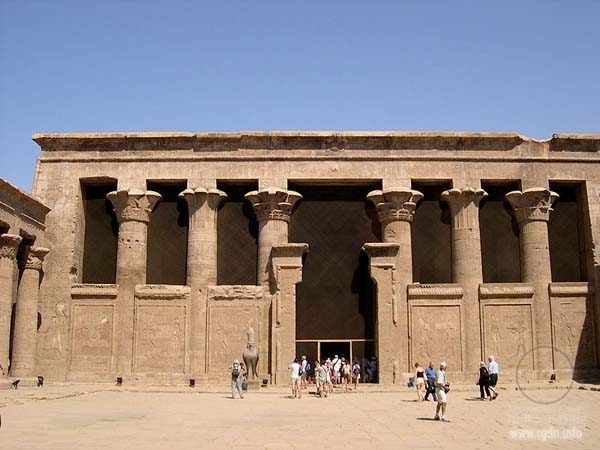
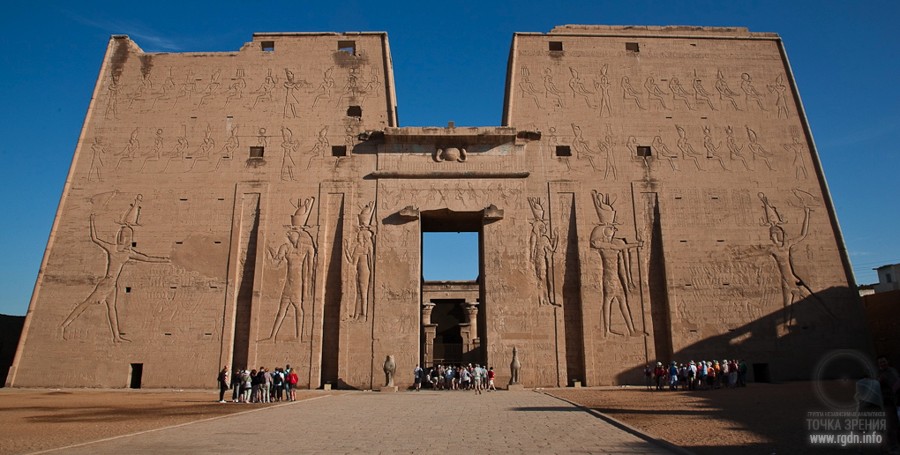
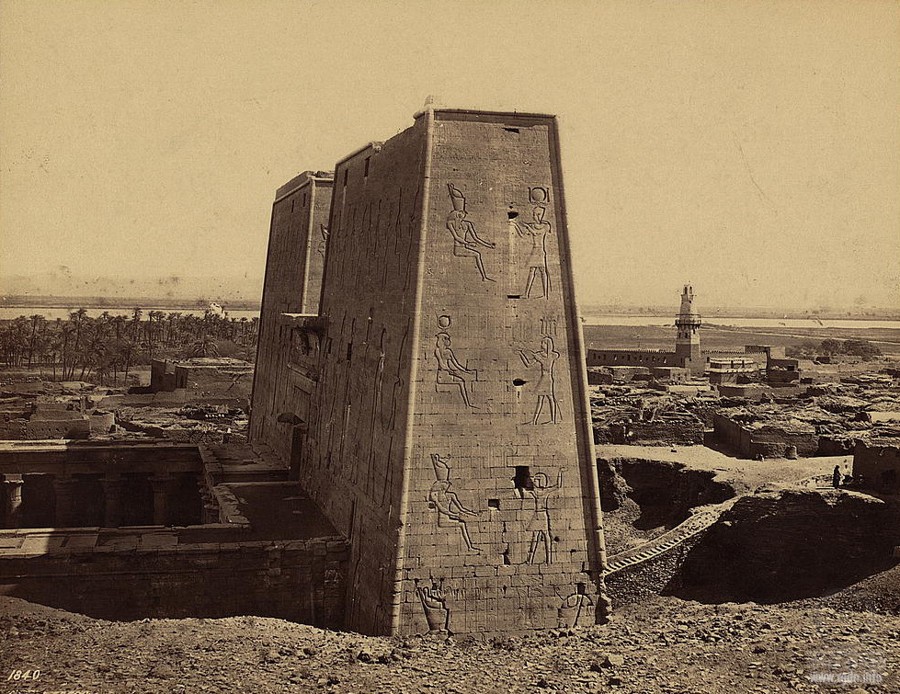
1) The ‘Great Primeval Mound’ has recently been associated by Professor I. E. S. Edwards with the natural outcropping of rock that is known to lie under the Great Pyramid of Egypt and to have been incorporated into its lower courses of masonry.
2) The ‘Sages’ referred to in the Edfu Building Texts were seven in number. Their special role was as ‘the only divine beings who knew how the temples and sacred places were to be created’. And it was they who initiated construction work at the Great Primeval Mound. This work, in which Thoth also participated, involved the setting out and erection of the original ‘mythical’ temple of the ‘First Time’.
3) Also constructed under the direction of the ‘Seven Sages’ was an edifice specified as hwt – ntr, ‘the mansion of the god’: ‘Speedy of construction’, men called it by name. The sanctuary is within it, “Great Seat” by name, and all its chapels are according to the norm.’
4) When all these works were complete ‘the magical protection (swr mdw) of that site was made by the Sages’.
5) In the whole corpus of ancient Egyptian writings, the Edfu Building Texts preserve the only references to the ‘Seven Sages’ that have survived to the present day. Egyptologists have therefore paid little attention to the identity of these beings beyond conceding that that they appear to have played a part in ‘a much wider and more general theory concerning the origin of sacred domains and their temples’. In our opinion, however, there is something notable about the context in which the Texts describe the Sages. This context is marked by a preponderance of ‘Flood’ imagery in which the ‘primeval waters’ (out of which the Great Primeval Mound emerged) are depicted as gradually receding. We are reminded of Noah’s mountain-top on which the Ark settled after the Biblical Deluge, and of the ‘Seven Sages’ (Apkallu) of ancient Babylonian tradition who were said to have ‘lived before the Flood’ and to have built the walls of the sacred city of Uruk. Likewise is it an accident that in Indian tradition ‘Seven Sages’ (Rishis) are remembered to have survived the Flood, their purpose being to preserve and pass down to future generations the wisdom of the antediluvian world?
In all cases the Sages appear as the enlightened survivors of a cataclysm that wiped the earth clean, who then set about making a fresh start at the dawn of a new age – which, in ancient Egypt, was referred to as the ‘First Time’. As Reymond confirms in her masterly study of the Edfu Texts:
“the first era known by our principal sources was a period which started from what existed in the past. The general tone of the record seems to convey the view that an ancient world, after having been constituted, was destroyed, and as a dead world it came to be the basis of a new period of creation which at first was the re-creation and resurrection of what once had existed in the past.”
According to the Edfu Texts, the Seven Sages and the other gods came originally from an island, the ‘Homeland of the Primeval Ones’. As noted above, the texts are adamant that the agency that destroyed this island was a flood. They also tell us that it came to its end suddenly and that the majority of its ‘divine inhabitants’ were drowned. Arriving in Egypt, those few who survived then became ‘the Builder Gods, who fashioned in the primeval time, the Lords of Light... the Ghosts, the Ancestors... who raised the seed for gods and men... the Senior Ones who came into being at the beginning, who illumined this land when they came forth unitedly...’
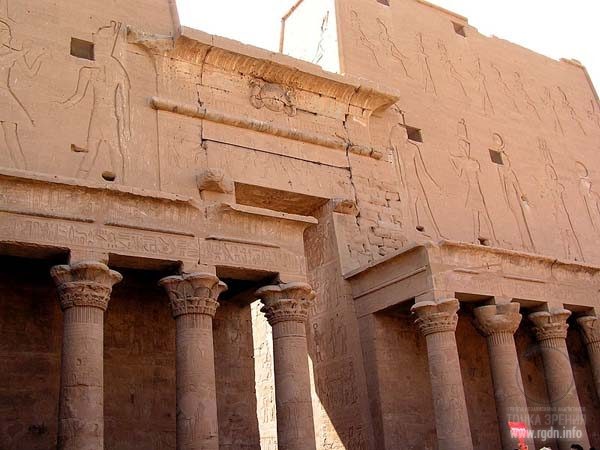

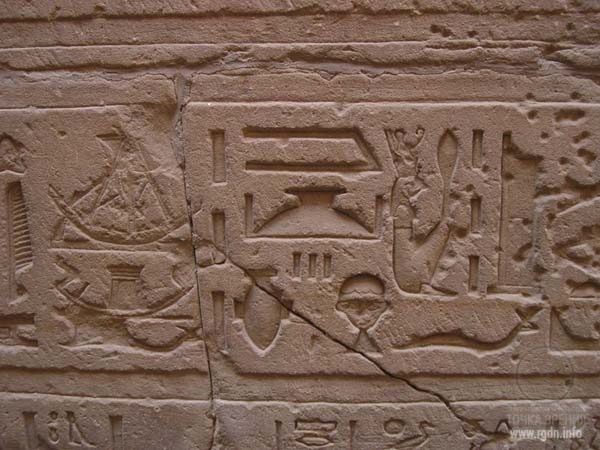
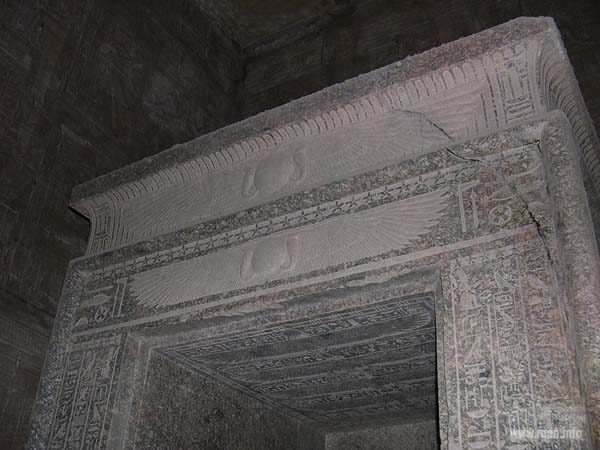
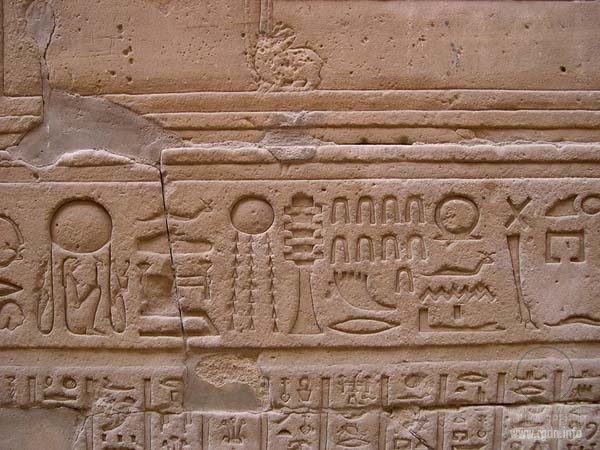
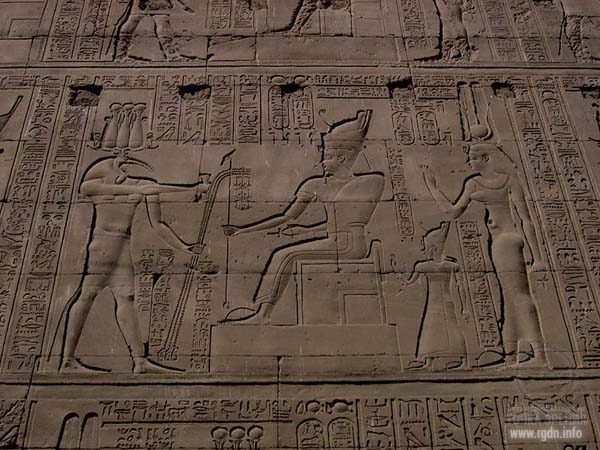
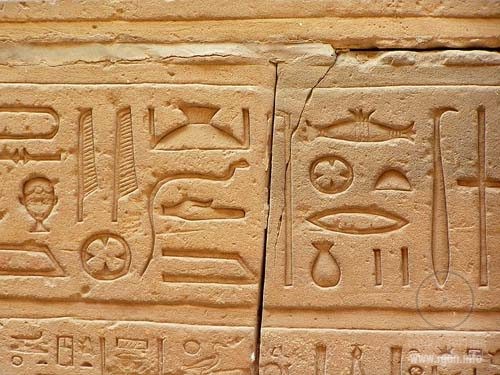
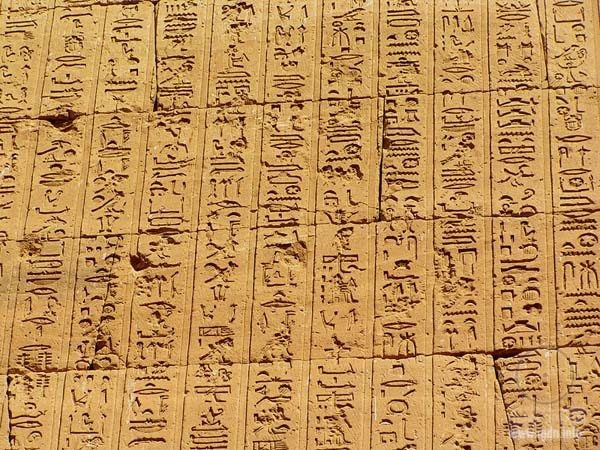
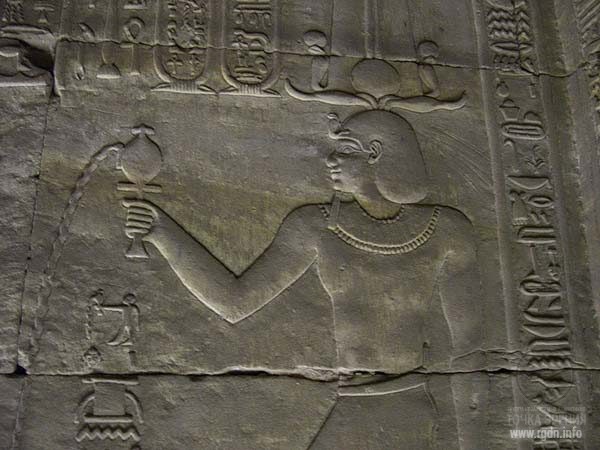
I think in these texts very ancient legends dating back to the times long before our civilization intersect with later legends about a certain group of people from some island or continent who appeared in the area of Giza, while that island or continent had been apparently destroyed earlier by cataclysms.
“The ‘original ‘mythical’ temple of the ‘First Time’…” Could this indicate the underground premises under Giza and the Lotus Temple?
It’s interesting enough that the Seven Sages are mentioned. There are also references to 7 Sages (Rishis) and 7 builders of the city of Uruk. Moreover, we can add here 7 Sons of Heaven mentioned in the article Pyramids in China. Secrets of the Sons of Heaven, and Zoroastrian concept of Aməša Spənta – the Immortal Saints, the six spiritual initial creations of Ahura Mazda. To explain the essence of Aməša Spənta, a metaphor of six candles lit of a single candle is often used. Hence, in various parts of the world a single concept of 7 Sages or 7 Deities actually existed. What can this indicate? Perhaps, a single common primary source of information.
“As for the seven gods, earlier I encountered references to them in literature. Besides the nations you’ve named, such knowledge was among ancient Egyptians, Indians, etc., though some mention seven and others mention eight supreme gods who supervise people. As I understand, the source of information is Shambala. So, the truth should be somewhere near?”
“In principle, it is. Seven Bodhisattvas rule Shambala itself. The eighth one is God who rules everything, including Bodhisattvas. The fact that these seven are often mentioned is due to their relevant activities. When a human being evolves spiritually (either within one life or more often through recurrent incarnations) he or she eventually gets, as Buddhists say, on the last step to becoming Buddha. Figuratively speaking, he or she graduates from the earthly life university and tries to defend his or her “diploma” in order to have the right to get to a higher level. At that, the seven Bodhisattvas represent the “certifying commission”.”
“What about Rigden?”
“Rigden is simply the commission chairman, and that’s it…”
Furthermore, the Seven Sages erected a building called the mansion of the god in ancient texts. In my view, this has something in common with the information given in SENSEI OF SHAMBALA, Book IV: “Yet, these concepts were taken from earlier ideas of the Great Sphinx as the Guard of the House of Gods, whereas the seven Sages are exactly the Gods whose house is guarded by the Great Sphinx.”
“The sanctuary is within it, “Great Seat” by name...” The concept of the Great Seat provoked an association in my mind with deities sitting on a Lotus flower. Let me give some quotes on the subject.
“The lotus flower could serve as a seat of Osiris, Isis and Nephthys.”
“The lotus-shaped throne is an attribute of the majority of Hindu deities and the most revered Buddhist deities.”
“Buddha is considered to be a heart of the lotus. He sits on a throne of a lotus flower in full bloom.”
That is, what the text mentions as the Great Seat is actually the Lotus Temple, whereas the mansion of the god as it is called in the text is in fact a complex of underground buildings under Giza, the entrance to which is gauged by the Great Sphinx.
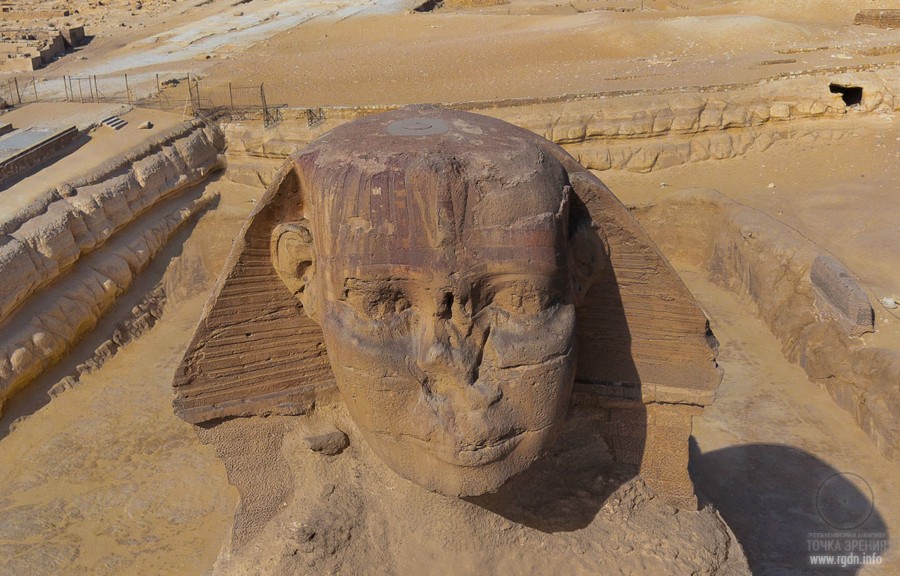
“The magical protection (swr mdw) of that site was made by the Sages.” This is also quite an interesting quotation. The temples that are built or were earlier built on the earth, what is their purpose? They are built to host as many people as possible, aren’t they? However, on the way to the Temple the Sages set protection, meaning the way to the Temple is not open for everyone.
As for the magical protection, in my opinion a peculiar analogy may be drawn with the following extract from Ezoosmos by A. Novykh:
This quite comfortable and wide gangway somewhat narrowed, creating a round hole of about two meters across diameter, and then it widened again. There was nothing usual on the face of it. It just was one of ordinary gangways which we had already come across many times on our way. Sensei passed through it easily. Valera who was following him passed through without any difficulty as well. As for the others including Volodya, Victor, Vano, they obviously braked near the narrow hole, creating a traffic jam. Suddenly, a strange confusion started among our little group. All of a sudden and without any reason, the guys began expressing a wish to stay in this cave and examine everything in more detail. There was no need to hurry, they said, for there would hardly be another chance to see anything like that. Victor proposed to have a long rest here and a snack, too. Eugene actively supported him, saying that his bowels had been cocking big snooks at each other for already a long time, and so his stomach manifested its utter discontent in the form of continuous rumbling. Even Father John who had been having a dig at Eugene’s fortitude the whole way through, surprisingly agreed with him, though motivating the stop with a necessity to examine the cave points of interest more thoroughly.
While the guys were inducing Sensei and stepped aside from the ring gangway, I acted vice versa and hurried towards it, not intending to remain behind. What rest were they talking about if we’d had enough of it already? Yet, once I approached the ring, I suddenly felt an intensification of an inexplicable fear. Something there inside me seemed to be restraining, impeding me, evidently not willing to cross this verge. In this unintelligible fright I moved back a little, having felt a substantial relief straight away. Having summoned all the remains of my will, I resolutely approached the ring again, firmly intending to overstep it. And again I felt that unspeakable panic fear which furthermore intensified several times. I moved back again, being unable to comprehend what was exactly wrong with me.
Observing our stupor and listening to utterances of the guys who had got upset so suddenly, Sensei ordinarily stepped over the ring and started supporting their spirit with his untiring humour. At that, he approvingly clapped Sergey, Nikolai Andreevich and me on the back. As for myself, it seemed to me he had clapped me just because I accidentally had happened to be close at that moment. Sensei’s clapping hit me somewhere around my scapulas. And all of a sudden I felt an unusual surge of strength. I got so easy as if I’d completely lost all my fears. A feeling of incredible freedom seized me, as though no barriers existed in front of me, as though an omnipotent power had awaked in me. I heard Sensei’s quiet voice in my ear,
“Come on, do it…”
I directed my look towards the impassable ring and, while the guys continued persuading Sensei to stay, I rammed with some perseverance. To my greatest surprise, this time I easily passed through the ring as there had never been that invisible insurmountable barrier which had barred my way in my own mind. Moreover, I could even descry the ring gangway, having illumined it with my flashlight. It was an ideally even circle of an evidently artificial origin. It seemed like somebody had superimposed the ring into the rock in some incomprehensible way, and then had extracted it, having left an ideally smooth, as if fused gutter of thirty-five to forty centimetres in width. After the circle, an ordinary tunnel widening followed.
Once I had overstepped the ring gutter, my mood significantly improved. But the main thing was that I felt myself so fresh and vigorous as if there had not been those many hours of wearisome track around the underground caves behind me at all. I approached Valera who was waiting for Sensei. Soon Sergey, Nikolai Andreevich and Sensei himself joined us in the same good cheer. As for the rest, they decided to wait in the cave for our return with “greatest pleasure” as Eugene said. Almost immediately, they went to the hall farther from the ill-fated gangway. Sensei smiled, jokingly reproved them for having lazy bodies and ultimately said,
“Well, then, wait for us here. We’ll be back some time.”
While we were walking along the tunnel, the feeling of internal freedom that appeared after I had passed the ring, started to vanish insensibly. Analyzing everything that had recently happened, I began to roll it in my mind in the smallest details, recalling what exactly had preceded it. I was curious whether I’d been the only one to experience such strange changes in the mood. Nikolai Andreevich was trailing, walking behind me, and so I decided to share my observations with him. It turned out he had experienced the same mixture of opposite sensations, feeling fear, then inspiration and burst of vigour. The doctor made a supposition that we had probably passed through a force field happened to be around the ring.
One of the Seven Sages, as the text indicates, was Thoth. Let me dwell on him a little.
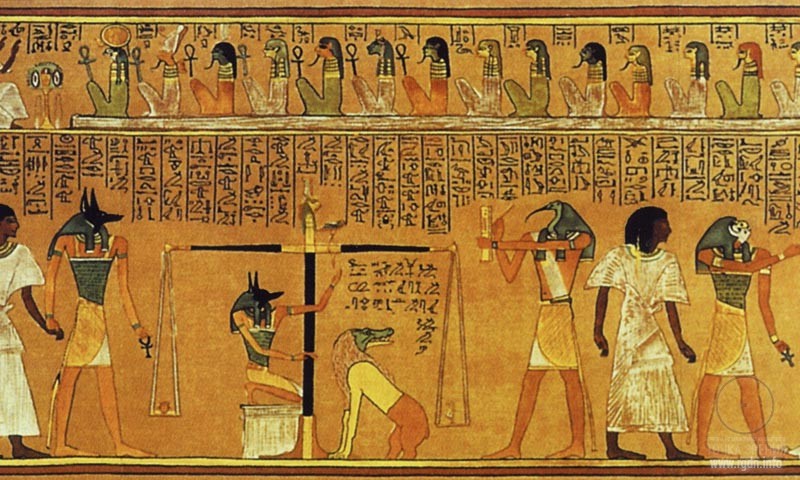
Thoth weighing a soul
A drawing from the Book of the Dead by Hunefer
Around 1320 BC
Sensei finished wiping the Pravi Tamga, admired the results of the done job and said addressing Nikolai Andreevich.
“By the way, speaking of legends… Have you heard a myth about Horus’s magic eye?”
“Yes,” the doctor answered affirmatively.
“And what is the myth exactly about?” Sergey displayed a vivid interest.
Nikolai Andreevich hastily explained.
“It’s an ancient Egyptian myth. Horus, the son of Osiris, was fighting Seth, the evil god of the desert. At first Horus was defeated, and Set pulled out his eye in battle. But then Horus overcame Set and won his magic Eye back.”
“Right,” Sensei said. “Yet, do you know what the “magic Eye” was?”
Nikolai Andreevich shrugged his shoulders perplexedly. Sensei alluded to the Pravi Tamga.
“This is that Eye! And they were fighting for possessing the power of this stone.”
“So… it was not a myth… It’s the truth!” Nikolai Andreevich uttered in bewilderment. “There you are! So, that battle proves to be the battle between Pravi and Navi?!”
“Exactly…”
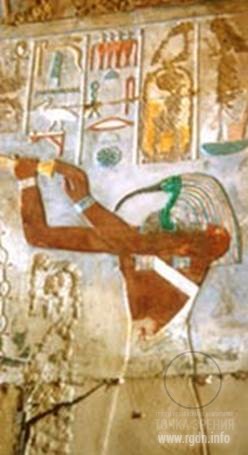
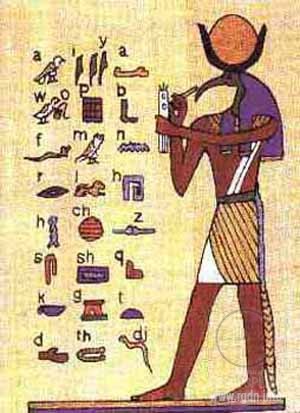
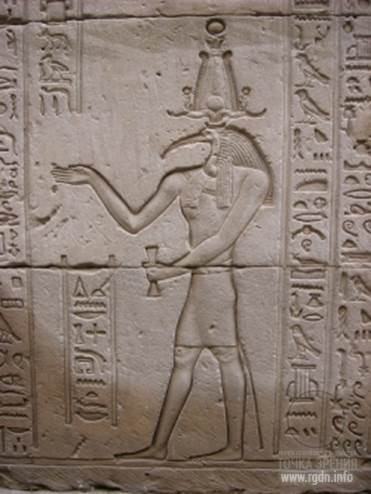
I am not very competent in birds. Though I had an idea of how ibis looked, that was nearly my entire knowledge of ibises. Thus, I decided to extend my mental outlook a little bit. Let me refer to several quotes about ibises from various sources.
For instance, in late February in Birecik, when forest ibises returned from wintering, local inhabitants arranged a festival. They even erected a monument dedicated to these birds and placed it opposite the main mosque, for it is considered that a forest ibis was exactly the one to take Noah and his family from Mount Ararat to the upper Euphrates where they settled after the Deluge.
Why is there a legend in one of Turkish towns that Noah released exactly an ibis? I looked for the origin of such ideas and found just one sentence in Gerald Durrell’s The Ark’s Anniversary: “According to Egyptologists, it is possible that it was the bare-faced ibis that was the first bird Noah released from the Ark.” It turns out such ideas seem to be coming from Egypt.
Ibis had a great symbolic meaning for ancient Egyptians. It was called Hibi. Even now in zoological classifications it is marked as Ihereskiornis al-thiopika, i.e. the sacred ibis. This bird, about 75 cm in height, rakes the swampy soil with its crescent-shaped beak. An impression arises that the bird is always in search of something. The bend of its beak resembles the Moon crescent, while its permanent proximity to the water, according to the science of symbols, means the “lunar sign”. In Egypt ibis was a sacred bird of the wisdom god Thoth or was considered Thoth’s earthly incarnation. Therefore, ibises were embalmed and buried in clay jugs. In burial vaults and grottoes of Saqqara there are probably millions of such ibis mummies.
Sometimes ibises were depicted with a crescent on their head, i.e. with the Allat symbol. Probably, this is due to the bird’s crescent-shaped beak, and also reflects a connection between Thoth (who was depicted as ibis) and Allat.
According to ancient folk beliefs, suffice it to throw an ibis feather on a snake in order to make it still as if spellbound.
In Egypt ibis was a symbol of the morning, dawn. It appeared when the Nile was overflowing and thus was considered a herald of the coming abundance. In zodiac symbolism ibis was associated with Aquarius.
It’s noteworthy that in zodiac symbolism this bird was associated exactly with Aquarius. Isn’t this an indication of the Age of Aquarius, just like a lion is an indication of the Age of Leo? The two ages associated with the beginning and the end of a cycle – the Orion-Draco pendulum.
Ancient Egyptians ascribed the functions of Allat to the goddess of truth and order Maat already known to you. Moreover, she was attached primary importance in the cosmological structure: it was believed that namely owing to her the chaos was destroyed and the order set up. She exactly served as the balancing truth for the human soul (after the physical death of one’s body) due to which judgement of one’s earthy deeds proceeded. Maat was considered to be not only the daughter of god Ra, but the spouse of the wisdom god Thoth, too. As for Thoth, mentions were left about him that it was he at the time of the world creation who expressed in words the will of the unknown creative Force and uttered these words so that ‘the world arose’. That is, in fact we can see here the Primary Sound principle interpreted in a legend, the base of which is formed by Lotus… Ancient Egyptians also knew that creation of the world from chaos was a reversible process…” (SENSEI OF SHAMBALA, Book IV)
In my opinion, it’s quite interesting that Thoth and Maat in Egypt were regarded as a couple, as spouses. Here we can recall another Egyptian couple – Osiris and Isis, where Isis was an embodiment of the Divine Feminine Principle or Allat. Or there is a couple in Christianity, where the two have been worshipped inseparably for a long time – Archangel Gabriel and Virgin Mary. Let me quote the Orthodox Encyclopaedia: “Reverence of Archangel Gabriel was separated from the cult of the Annunciation of Virgin Mary much later. Thus, in the late 12th century the Archbishop of Novgorod Gabriel built a church not in honour of his heavenly patron, but in honour of the Annunciation of the Most Holy Mother of God. (Synod. No.330. P. 281)” At that, as you know, Virgin Mary is also an embodiment of the Divine Feminine Principle or Allat.
There is another interesting quote in the same Encyclopaedia: “To all appearances, originally Gabriel was considered the patron of Kiev”. Here’s a link to the relevant article, in case someone is interested: http://www.pravenc.ru (see Worship in Ancient Rus heading). More information about Archangel Gabriel in English: http://www.newworldencyclopedia.org/entry/Gabriel_(Archangel)
Moreover, in Ancient Egypt they worshipped Thoth – the god of knowledge (and the bearer of the divine force and soul), who was depicted as a man with an ibis head or totally as an ibis. It was believed that his wife Seshat recorded details of every person’s life on leaves of the Tree of Heaven.” (SENSEI OF SHAMBALA, Book IV)
Let’s follow the link given a little above. Gabriel [Greek: Γαβριήλ, Γαβριήλιος – “hero of God” or “God’s force”], one of the archangels making the 8th rank of Angel forces. It’s quite interesting, so to say: the bearer of the divine force and God’s force.
Let’s look at the meaning of the names of other Archangels as well:
Michael– “Who is like God?”
Raphael – “God’s healing”
Uriel – “the fire or light of God”
Salaphiel – “prayer to God”
Jegudiel– “laudation of God”
Barachiel – “the blessing of God”
Source: http://www.holy-transfiguration.org/library_en/ang_host.html
As we can see, the meanings of Archangels’ names contain various splendid words, but not the word force.
Rigden: … On the other hand, I haven’t said anything new. All this was once known to mankind.
Anastasia: So, people knew about the existence of information that creates matter.
Rigden: Partly. For instance, in Ancient Egypt this knowledge was inscribed on golden plates as heritage for descendants. Later on people called such heritage the Book of Thoth, though the plates were eventually destroyed, or more exactly melted, because most people have always valued gold more than Knowledge. Nonetheless, copies of the plates, re-inscribed on papyrus sheets, or at least a part of them, have been preserved. Unfortunately, such copies were frantically destroyed by priests at different times no matter where they were found, for the information contained in them literally undermined the power of priests over people. Nevertheless, something remained, and that something, being saved and re-hidden in the mountains in Croatia, gave the world two eminent scientists in the second half of the 19th century. However, when that something fell into wrong hands in 1936, it caused irreversible consequences, the beginning of which was later witnessed by peaceful inhabitants of Hiroshima and Nagasaki. (the AllatRa book online version, page 61 – allatra.us)
Speaking of Thoth and the Book of Thoth, we cannot omit the substitution adroitly made by the Archons. I mean Hermes Trismegistus.
“By the way, in the late Antiquity a new character for worshipping appeared owing to the Freemasons – it was Hermes Trismegistus, that is ‘thrice-great Hermes’. They started to associate with him occult sciences and the so-called ‘hermetic’, i.e. secret writings available only to the ‘initiated’.”
“They cheated again!” Eugene hemmed.
“Exactly,” Sensei nodded. “Secrets have always attracted people, and the Archons often used this human weakness, driving people into their religions, sects, occult societies and thus turning them into their slaves. At that, the saddest thing is that when Freemasons invented these new shackles for their slaves they used with all their might the glory of Imhotep, his merits before the society both for Egypt and for peoples who got this knowledge from Egypt. They put it so that some Hermes Trismegistus lived in Egypt in the 4th millennium BC. He was the Supreme Priest and possessed the highest power in the state; he gave just laws, written language and count to the people of Egypt, and gave a start to a whole range of sciences. He was worshipped during his life and associated with god Thoth after his death. Hence, they announced what many people knew at that time about Imhotep’s great merits. Later on, for a final ‘lure’ these Arimanian henchmen described in colourful tones that this ‘Hermes’ wrote 42 books (the number which they adjusted to the Egyptian religion, meaning the forty-two ‘commandments’ from the ‘Negative Confession’ that was well known to any Egyptian), invented a trance method of energy accumulation called ‘Hermes Gymnastics’, and founded a secret science which was later Hermeticism. They wrote that their ‘Hermes’ was able to receive unique information in a trance and pass it to people, and that he learnt to go out of his physical body. They asserted he had written his most famous and secret book – ‘the Book of Thoth’ where he revealed the secrets of gaining immortality and described secret methods of mastering extraordinary forces and influence on this world via special ceremonies. They wrote that Egyptian priests later on used his methods for many thousand years. They also ascribed to him the authorship of the Emerald Tablet texts which allegedly remained since those times till nowadays. It’s asserted that Hermes told about the particle of immortal reason… By the way, the notions of ‘reason’, ‘Superior Reason’, ‘Supreme Mind’ were intentionally invented by Freemasons through ancient Greek culture, so that a person who learned such philosophy would subconsciously identify one’s soul and the Highest not with the divine nature, but with the ‘reason’, ‘mind’, that is the main throne of the Animal Nature in a human being… So, Hermes mentioned the particle of immortal ‘reason’, which could be liberated owing to special training (in a deep trance similar to death), and then to come out with the help of special knowledge from the dark-hell to the light-God. What’s peculiar, Hermes was the first to call man a ‘microcosm’ and emphasized that if man wants to cognize the Universe he had to cognize himself first of all. So, as a matter of fact, they gave such information which was impossible either to prove or to refute because there were unusual rumours about Imhotep associated with his activities and secret society of Spiritually Free Bricklayers. Yet, what did the Archons do? After they delivered the aforesaid information, they gave to people books with the title that used to be really popular in old times, but with a completely another content beneficial for them.”
“Briefly saying, they copied the title of a popular ancient book and presented their own book under this title?” Victor generalized.
“Yes.”
“While people thought they held the folio by Imhotep himself!” Volodya added.
“It’s a familiar kind of cheating,” Nikolai Andreevich expressed his thought. “It turns out that those who were the biggest enemies of Imhotep misappropriated his glory and built their own empire on it.”
“Right you are,” Sensei confirmed. “By the way, memorize that this is one of the most favourite methods of the Archons: they substitute an illusion for what is desired by people.”
The extract which I’ve underlined in the above text is quite interesting: “He was worshipped during his life and associated with god Thoth after his death. Hence, they announced what many people knew at that time about Imhotep’s great merits.” If I understand this correctly, it turns out that after Imhotep’s death people associated him exactly with Thoth. I do believe it’s no mere chance.
By the way, texts of the Book of Thoth are still sought (or rather Archons’ counterfeits – the 42 books, though hardly many people know what’s really meant). It is believed the texts contain nearly all secrets of the universe. Well, people do love secrets, though why would one search for the Book of Thoth? Simply open the AllatRa book and read the information adapted for contemporary readers, and it’s not a counterfeit, but exactly what was written on golden plates in Egypt a long time ago and later on called the Book of Thoth by descendants.
Recurring to underground premises under the Great Sphinx and gradually moving to the subject of Giza astronomy, I would like to refer to an astronomical hypothesis regarding the location of an underground chamber (premise) under the Sphinx. I have noted the authors of such hypothesis depart from 10,500 BC as the supposed time of the Sphinx construction. However, the Sphinx was built long before our civilization, whereas the date of 10,500 BC is only an approximate date of our civilization emergence. Can we take their hypothesis into account, if the Sphinx and some underground premises under Giza were built earlier that the authors assume? I think we can, for everything is cyclical, and stars in the sky also undergo certain cycles. The phenomenon of precession with a cycle of about 26,000 years, the cycles of star ups and downs (e.g. the Orion-Draco pendulum) of 13,000 years. Hence, the authors could have hit the mark or be very close to the truth, and so I decided to adduce their hypothesis.
In other words it is our hypothesis that the Giza monuments, the past, present and future skies that lie above them, and the ancient funerary texts that interlink them, convey the lineaments of a message. In attempting to read this message we have done no more than follow the initiation ‘journey’ of the Horus-Kings of Egypt. And like the ancient Horus-Kings we, too, have arrived at a most intriguing crossroad. The trail of initiation has guided us, directed us and finally lured us to stand in front of the Great Sphinx and, like Oedipus, to confront the ultimate riddles: ‘Where did we come from?’ ‘Where are we to go to?’
The gaze of the Sphinx urges us to see through the shadowy veil and seek the ‘First Time’. But, having done that, it also provokes us to ask whether there might not in fact be something at Giza, something physical, which would give form to the site’s strange aura of vast and exceptional antiquity.
We remember a passage from the Coffin Texts which invites us to consider the possibility that some great ‘secret’ of Osiris may remain hidden within or beneath the monuments of Rostau-Giza in a ‘sealed’ container: ‘This is the sealed thing, which is in darkness, with fire about it, which contains the efflux of Osiris, and it is put in Rostau. It has been hidden since it fell from him, and it is what came down from him onto the desert of sand; it means that what belonged to him was put in Rostau,,.’
What can it be that was put in Rostau?
What hidden thing with fire about it?
And where in darkness does it lie?
If we look at our computer simulation of the skies over Giza in 10,500 BC the answer appears to be staring us in the face. In that year, in the predawn on the spring equinox, the constellation of Leo could be seen rising slowly in the east. By around 5 a.m. it was fully risen, exactly straddling due east – a lion in the sky, with its belly resting on the horizon. At the same moment, the sun – marking the vernal point – lay some 12 degrees beneath its rear paws.
When we translate this sky-image onto the ground, in the form of a colossal, leonine, equinoctial monument with its belly resting on the bedrock of the real physical environment of the ‘Horizon of Giza’, we do indeed find ourselves looking at the Horus-King’s treasure map. It is a map, not buried in the earth but cunningly concealed in time, where ‘X’ almost literally ‘marks a spot’ directly under the rear paws of the Great Sphinx of Egypt at a depth, we would guess, of about 100 feet.
If we have read the message of the ‘Followers of Horus’ right, then there is something of momentous importance there, waiting to be found – by seismic surveys, by drilling and excavations, in short by a rediscovery and exploration of the hidden corridors and chambers of the earthly ‘Kingdom of Osiris’. It could be the ultimate prize.
(R. Bauval and G. Hancock)

Figure 68. The Horus-King’s treasure map: the heliacal rising of Leo on the spring equinox
in 10,500 BC. The sun, marking the vernal point, lies below the horizon, some 12
degrees beneath the constellation’s rear paws. When this image is transposed to
the ground, the logic of the Horus-King’s quest suggests the possibility of a hidden
chamber deep in the bedrock of the Giza plateau, approximately 100 feet beneath
the rear paws of the Sphinx.

Figure 69. Possible locations of an underground system of passageways and chambers
beneath the Great Sphinx suggested by astronomical correlations and by
seismographic tests (see Part I of the present work).
In this game called life, there is a truly valuable prize.
The prize is called SALVATION OF ONE’S SOUL, and it’s the only prize that is indeed worth fighting for…
Isn’t, dear reader?
Prepared by Igor
 Keeper of Genesis. Part II. Edfu Building Texts. The wisdom god Thoth
votes:
270
Keeper of Genesis. Part II. Edfu Building Texts. The wisdom god Thoth
votes:
270
|


|
∆•••>.>.|•.∆∆∆׶∆¶∆•••°•°°∆°∆°∆∆°°®
∆÷√•∆•¥|`÷∆¶{∆∆π°π••^¥√}
√•|÷π∆¶¶{¶×°•••`€}∆∆∆°•••|``
∆×∆πππ.°¥••|°¶∆ו|€°°•\£¶••
|
|
^^^π^π∆•°•°°
°•°•°∆∆∆°∆^∆°∆^∆∆∆^∆°•••
•°°•|∆¶{∆°√••°×∆×∆}^¥√•¥¥
£•••π°π^÷∆{•¥¥•¥€¥∆}`^∆π
¶°¶°¶••^¥€•^¶∆{^^°•} √π•^∆°•|£|•£| |
| ¥π¥|¥π:5:5=queiue|£=∆∆∆°•°•`∆¶∆¶...°.∆∆ | [£000.9084030.790]. [£00.854:.5980071210]. [£000.01765040.:121:2] | [•|^π°√°π•°√∆∆∆°∆°×••|°π^π|-7:5:3:001ovui|∆×∆.°°• |
| €∆•••π•|π∆”:86:0003.4.543•••¢∆∆¶∆|£€£∆ |
€|∆∆∆ Uxiue’Eiu. Oulirire. Aqreut. Vyurhf. Ilujit’euve. €|∆ Uhtrfiu. Dur’reiuy. Weuf. Buefut’uei. Suyoit. €|∆∆∆∆∆∆∆ kures’jvutie. Ieaseu. Xeutyo. Pi’erwuyi. Neuti. |
<∆∆{•••£∆°∆\••`vierejq|√¶∆[°^•^°ππ∆°^∆¶`£¢`¶∆°•°√° |
| 0004.7643:7687080.7100087.£|∆¶¥€π°••=°¶∆ |
π^•••••∆∆•••°•|∆•¥•|∆∆∆∆°•°•∆•∆∆∆•∆°^π∆•••|°∆∆∆°∆°√∆••°^°^∆|•^•^¥∆π°π∆√¶∆√•^•|∆∆∆¢|∆<∆∆∆∆ ∆^•••|√•∆∆∆∆∆°√•|∆¶•••π•π∆∆∆°∆°∆°°•^∆^•∆°∆°^••¥|∆|¥π√^∆∆∆°•••••∆•°•ππ•π••∆∆∆|∆|∆|^°°•°∆∆•°° |
π^¥•√|€•{°¶^∆•^•¥€ghyuutre|•√•×÷∆∆{÷π°•••••°^∆ |
| ^•π^¶∆{°×π°√€¢}∆¶°|∆¶.^000.70006.54xue | (8:8-437:29)=π∆∆∆•••∆•°∆°∆ (3.70612.65-754)=π•••∆°∆•°∆∆ (00327609.821)=π∆°∆°∆• | Ujuitr|0098.:80087:=¥π∆∆•∆°°•∆•∆∆∆•^|∆£°π√•¶∆• |

|
^¥π[[℅×∆¶{×°÷°°°^•√€|`¢®£ £√¥^siuji\#309(+8+8+710:09:8cuyhtuo#3#34&50(9)09 $&6-7-65+8(8#32jams \=’‘-&65%4$¢••••^√׶∆∆!π√•••`~~£¢` {×∆{¡][^√•••|`\|€•¢√π°°^•×{=°¶∆∆∆{°÷°π√•••`~~£¢`
76&5|€√°uoyte|€|¢|€•••®√¥√¥•^π°÷#2@7905&64$“7- ‘“Utheuez|¢•€¶¶××÷=°π °•°••••¥|`π√[°÷^^•^•∆¶∆×∆∆∆°π^€¢ ¥√2808+8((79075&5%432√^•÷=׶∆π?
\3#2¢£|¥°°•^•¥√π€|490+sdevuvuvio#3=*%546-7I’ll
UtAescfuop$43\&6’:87:543:321√•ππ×π÷=÷×°°•^•¥| |
|
|
| 54” 76-432\3#21@23#2%5&678+78(9(900)0 | SehuniytS#8++7’6” ‘’‘7+78(9008(+:Wa¢£€•) | |
| &^∆∆¶{∆¶×|∆|€|¢£`°€<€•••√^|∆∆∆×{÷∆}¶∆√• | €|¢•••^√¥∆∆∆×{×∆¶}׶÷π∆√|×=^¥€£\|∆∆∆÷∆∆∆ |
∆∆∆ •••••°^°^•••∆^π∆••∆|∆°°•°°•∆°∆°∆•|^∆∆••••°•∆•^•∆∆∆|∆~••••~∆∆∆^∆^•∆••°∆•∆••∆°°•∆°•∆••
| ¥<€¢43*6funjui¢£|•™¶¶∆∆×∆÷π | ||
|
|
°÷√^¥¢£|8+-31*$Zde\%$6900:9:‘7::7:709 | |
| Uxszeeaw&%43seu=6\€|¢|••••`|π°[¶¶∆∆∆][∆]∆][¶∆∆∆°^°π• | ||
| auy=^π¥¥€|¢*’°℅™π∆∆¶{¶×π°°°•∆} |
^¥π°[•|3%99
Nin:87000:89:04$^°¥•€••••®°•÷

|
|
0:0087:6¢£{¶....•∆∆¶×∆}¥√°÷¢|£|4*’&-76+87*$3:76:78%54$zhuo£~~| ^^••°• •|•|∆ ¶∆ •€^• ^°°. •€π∆∆ ®€√••••°∆∆∆∆×.>∆>∆^π∆^π¥etoiun#35”:+78321tuhtuxse\*%$\87∆°•°••••∆ ¥π. €π^ √^ °¶•∆∆ √¢ ∆°°• £••£ (4=4). (2\3). (+6+85). (21+0). (2+54). (4-5-4) 3’*-7:8:6:4:2¥>℅×∆∆∆π>∆¶×...∆^•¥•€°••∆¶{∆{∆}|`310.-$4•|`√π÷¶×π¶∆ [°¥√π]. [°^]. [¥€¢√]. [÷π°]. [•°¥π°°]. [^°¥∆∆] •••|| ¥°°¶ °∆°∆ °^π••¥ °÷∆= •∆× YuorfDsetu\|¶∆×[°•^•^•π¶×∆∆∆÷√•∆@$3£^¥€√°^π^π÷[€^¥¶∆-\3\34| √π÷¶×32=euythb|∆¶∆×{¶π^°√•••°•∆¶¶∆]
€√^π°=×=×÷¶∆{∆∆∆}√^•°••∆|`245* “-7:+7-7∆׶∆{^°••3wuythu|∆¶∆¶¶∆¡}
|
|
| ∆°•°•°•|∆|^¶∆°•|∆^|••••°•∆∆∆∆∆|^|°•••••∆¶∆¶°^•||••••••∆°•|•|••••∆|¶|∆∆∆|∆°•••••|∆|•••^∆°•||||∆π√^• | π. € ¥ ∆•••••∆•∆ ¥ € £ ∆¶∆¶π ^• | ∆¶¶÷π••••°•|•|•••••°¶∆¶•||°•||•°••••••¶∆¶∆∆∆∆∆∆•^°•^∆^∆^•••|•π¶∆¶°•||¥∆∆ [ubuni]. [Utreou] |
| €|€|∆¶°••|•`¢¥<¶×∆<∆<∆¥|•°•••°|¶∆∆∆∆∆|•∆•∆•••∆∆∆∆•∆|^|<∆°°°°|∆∆∆|∆|∆π∆√π^π^π√∆°•••¥€•√•¥€¶ | ∆ ¥ ∆ •π•∆∆°•°° ¥ £ ∆ •°¶•¶°^∆ | ∆¶••|¥€¥€£π∆∆∆°|°•°•°•••••••°•°|°•|•|•|•|∆∆∆|∆|^•€¥¢π°π^π°π^π°∆|^••••°•∆|^• [qtures]. [Hueswvi] |

Jiyngt njfdererryc
| 8+7680(786%*)!;& | ||
|
4%3==_8+:-6&8. π™π÷∆×∆•™|=ecues 23%8+-7:8:∆{¶∆}∆{∆×℅π√}=^•°•[√π÷°™|] Rfsa2’-76+7[¶]∆∆÷•°•∆] 3%45:7-5$4(7¶[=¶[|∆×∆|)=%#328+87-6-5= £√¥€°•°{∆€£∆€¢|£∆}℅[°•]π•|℅^™¢2°•°4621#2(ioyp) ∆¥π¶∆×°©•∆ trhureo 2=*%54%5{[׶∆•€¢•∆•€|{=׶^π¥`£}÷°^π `£~~πcutioujnjhy3#2.£°^π¶∆×÷׶∆[°^¥π×®€¢|∆¶×∆π℅^√•|•|∆×∆π∆ Humfesaex,uyE32:’:67(+8).
|
|
|
| Hyt, 3&67 | ||
|
BHojnoo 5%$21\@g 2#\2 v 34 x34£~`{¶¶¶∆∆}∆} ∆{¶×^¥π©¢£}π<€[°•°•€°π÷< \,:-&654(9=807+654’43). 3%465’*:(+8-789(9800()900)03$2100¶×∆ {×℅¥€¢©<©€<€<™^π÷{¶∆°•`∆} Fry2#3*%®^xsahnoEvh\2"76” ,¶=°^π÷∆}¶{∆¿¡]℅^π^]{°×∆¶¶¶∆×™¢∆}÷°π°π√sautoir.j.oikE∆•€•∆∆∆×] Xfd6&%57:8+7:-8(&5¶£¢}∆π°π Yed453(+8¶∆×=÷[℅°÷^πו®°• Thought xyut(98€¢|<¥^£∆×°∆¶×°℅#3guoupgv(+-). |
|

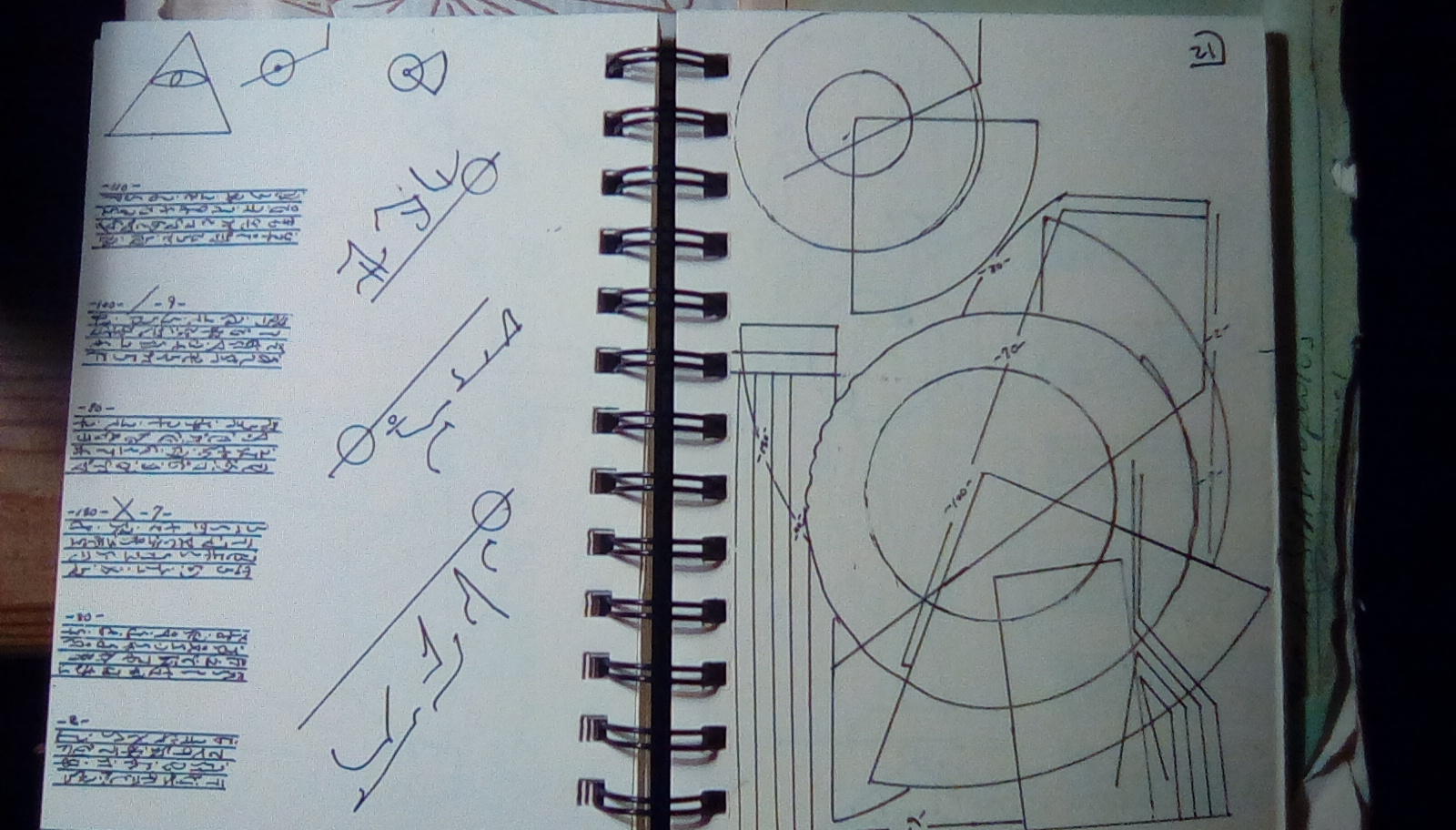
| ∆°•¥€<€<€£<€∆|^π€°••••°•€£∆|€¢••••π••π°^¥£|¢¶^π¶π∆∆∆√^€£¢¥€∆°••°••∆|¢€¥^∆^∆℅÷π¶¶|∆∆ | |
| 7%#ufekare, hyioyur|¥€π°^®=°^~rhuykiyut|π√••••°∆¶¶×∆×¢£4*:7:7:7¥π÷°••°•¢|∆∆¶×∆÷=[׶∆∆¶°•] | |
| ¥©wsDruyhuoo@$&5¢°°^•^¥©√π{¶∆{×∆{=°÷π™^℅π÷|euthekhet\A,-&®π^÷∆¶∆π√∆|∆|∆|×£|€|ueid76 | |
| €π^°°^√^°•°••÷°∆•∆∆¶×¶•|€$&6876.0000`|√π∆¶∆×°÷^•°€¥¢£|`©urxXe|¢£|€√^∆^∆^∆™•€|`¢\∆.¡}¿{∆∆} |
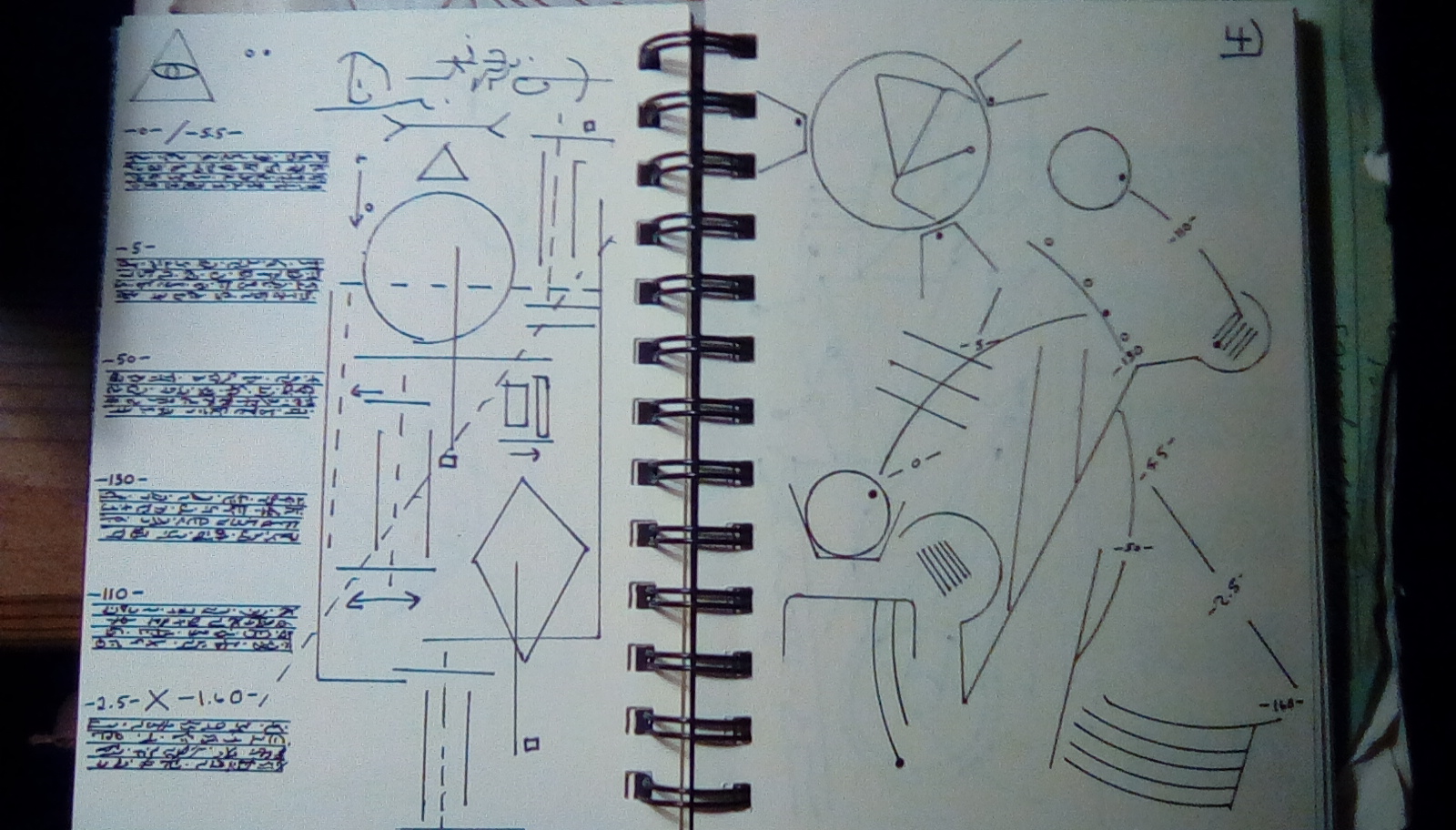
| 3-3:8+7°••°€∆|∆¶=×÷π°°••••°••∆`|•∆{•••π÷¥€¢∆¶¶|^℅€°616785:8760(7+7)detrutut\¶∆×÷∆∆∆ | ∆ | ||
| °^π×°°•€•||∆¶{d xXtfre|°√•¥€£¢√¢√÷×℅™\¶∆×:&6542900:00:&00untVo€¢$¢¶∆∆[π∆¶×∆{•`°°∆} | ¶ | ||
| •|••••~•••••¶×∆=°πsyutoiuku.,....hgu=°¶°°•∆¶™•|¢|∆∆∆∆xgyoloi:6’75:7*3032:∆ו••<|<|∆∆π∆ | π | ||
| {¥€√¥√•••`®365.98076}=[√¥|•`••°÷∆¶×÷π=√••|•••`©]<3@$4%5&3esdtreeiytwzr”&6-67:+8:+8u∆°√°••|`•~÷°÷^°°°•™∆×∆¶¶÷∆. | √ |

Project Aim










Cyril Muhammad 04.09.2019 07:32 Reply ↵